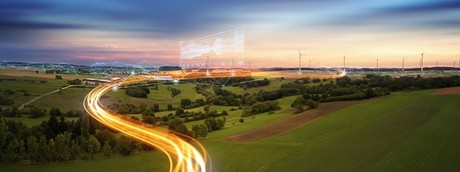Digitalisation at the heart of energy's "grand transition"

At Digitalize 2017 later this month, Siemens will be discussing how the global energy industry is undergoing a major period of transformation — with digitalisation at its heart.
The sector is experiencing what Christoph Frei, Secretary General of the World Energy Council, describes as nothing less than a “grand transition”, with an unprecedented rate of change.
The drivers? An evolving mix of power generation sources; rapidly improving storage technology; the growing pressure to decarbonise; the need for energy systems to become more resilient in the face of multiple threats (including cybersecurity and extreme weather conditions); and changing customer attitudes.
Siemens — which supplies 30% of Australia’s power generation — has a unique perspective on this transformation, based on its expertise gained both locally and in energy markets across the world.
Siemens Energy Management Division Chief Technology Officer Dr Michael Weinhold visited Melbourne recently to address the ‘Australia’s Energy Transition through Innovation’ event.
According to Dr Weinhold, we are witnessing “a massively changing mix” in terms of energy generation, including a greater focus on wind and photovoltaic power plants. At the same time, the sector is becoming increasingly consumer-centric, with customers more empowered than ever.
Not only do they now have the means to generate electricity themselves, “They can also team up with others. Peer-to-peer business models are being prototyped, swarm models are being prototyped, shared economies also starting to kick into the system, so the consumer-centric energy world is really full speed underway,” Dr Weinhold said.
The enablers are breakthrough technologies which deliver performance and cost benefits.
“It’s wind, it’s photovoltaic power plants, it’s digitisation as one of the key enablers to allow faster development, forward simulation, integration. Not only physical integration, but also market integration of the systems, and also allowing intelligent sector coupling, and overall system efficiencies.”
The electricity system is seen as key in the push towards decarbonisation within sectors such as mobility and heating & cooling, with electricity grids allowing efficient integration and transportation of huge amounts of renewables.
Siemens pioneered the adoption of artificial intelligence in the energy space. Examples include disturbance classification in grid, and then also deriving fast response to disturbance.
“It also enables us to better localise faults when they happen in the grid. Other examples are emission, reduction of gas turbines, improving the yield of a wind turbine, because the controller setting of a wind turbine is so complex nowadays that using machine-learning algorithms you can squeeze out more energy yield.”
According to Tim Holt, CEO of Siemens’ Power Generation Services Division, digitalisation and innovative analytical tools are offering customers immense opportunities to improve flexibility, efficiency and productivity in turbine applications.
As Holt explains, there have been three key developments in terms of digitalisation.
“First is the transformation of sensor technology thanks to microprocessors. Basic monitoring of temperature and pressure existed for years. But sensors have now become much smaller, tougher and able to communicate. Miniaturisation means they can now be installed in places they couldn’t before, and robustness means they can go into much harsher environments. Wireless communications technologies like Bluetooth and Wi-Fi mean they can also transmit data without any inconvenient cables.
“Microprocessors have also become much cheaper and are often available off the shelf rather than having to be tailor made. So cost, too, has spurred vastly increased usage.
“With all the real-time data now available, we’re much more aware of how turbines are performing. We can monitor and analyse all manner of data flows constantly.”
The rise of digitalisation and change in the service-customer relationship is part of a broader transformation of the power generation industry.
“Digitalisation opens the door to preventative maintenance: access to real-time data means faults can be detected early and expensive downtime or catastrophic failures nipped in the bud.”
Learn more at Siemens’ annual digitalisation conference, Digitalize 2017, which will be held in Sydney on Wednesday, 30 August 2017. For registration and more details, see https://www.siemensdigitalize2017.com/.
From coal to clean: accelerating Asia's renewable energy transition
As Asia faces mounting climate challenges and rising energy demands, the push to shift from coal...
Mitigating cybersecurity risks in tomorrow's smart cities
As cities embrace the potential of 'smart' technology, the allure of a more sustainable...
Navigating the supply chain for Scope 3 emissions
As data centres transition to renewable energy sources, they now need to gain a better...









